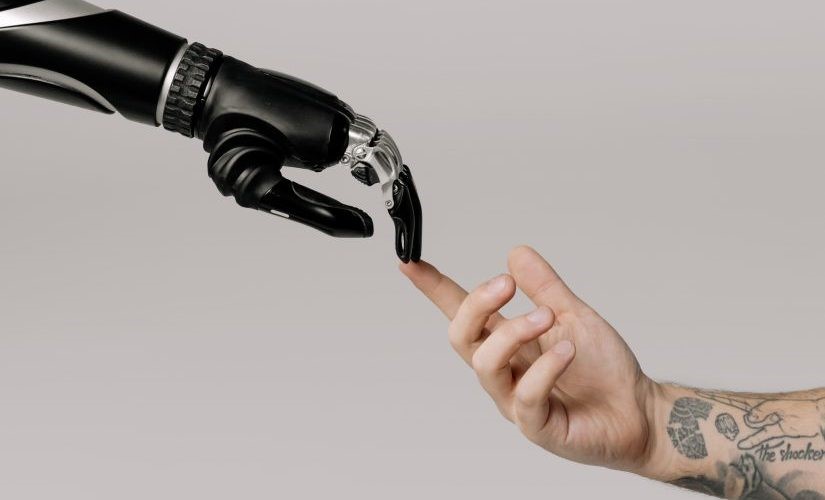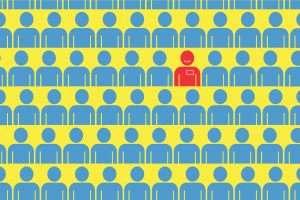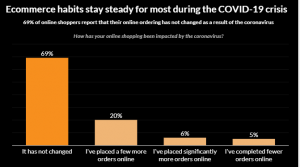The Human-AI Collaboration: Humans and Machines Can Work Together

In recent years, the pervasive influence of Artificial Intelligence (AI) has been transforming diverse facets of our lives at an accelerating pace. AI’s footprint is undeniable, from personalized recommendations on streaming platforms to autonomous vehicles navigating our roads. As we navigate this era of technological advancement, it becomes increasingly crucial to comprehend the profound potential that lies within the collaboration between humans and AI.
Understanding Human-AI Collaboration
Defining Collaboration and Its Significance
Human-AI collaboration refers to the strategic partnership between human intelligence and AI technology aimed at harnessing the unique strengths of both entities to achieve superior outcomes. This collaboration holds paramount significance due to its capacity to bridge the gap between human ingenuity and AI’s computational prowess. By blending humans’ cognitive capabilities with AI’s analytical power, we can aspire to solve complex problems and innovate in unprecedented ways.
Exploring Strengths and Limitations
Both humans and AI possess distinct capabilities that, when combined, create a synergy greater than the sum of its parts. Humans excel in creativity, empathy, and critical thinking—traits AI struggles to replicate authentically. On the other hand, AI thrives in data analysis, pattern recognition, and automation, areas that often challenge human capacity. It’s vital to recognize the limitations of each—human errors due to fatigue or cognitive bias, AI’s reliance on historical data, and the inability to comprehend emotions.
Highlighting Synergistic Potential
The fusion of human and AI strengths can lead to remarkable outcomes. For instance, consider medical diagnosis. While AI can rapidly analyze immense datasets to suggest potential diagnoses, human doctors bring nuanced judgment, empathy, and the ability to consider individual patient contexts. This combination can lead to accurate diagnoses and personalized treatment plans that enhance patient care. Similarly, in creative industries, AI can generate ideas and optimize processes, allowing humans to focus on refining and adding their unique touch.
Complementary Skill Sets
Human Cognitive Capabilities
Human cognition encompasses elements like creativity, empathy, and critical thinking. These qualities allow humans to navigate ambiguous situations, derive inspiration from diverse sources, and understand the emotional nuances underlying human interactions. This emotional intelligence enables effective communication, empathy-driven decision-making, and a deeper understanding of societal and cultural dynamics.
AI Strengths
AI’s strengths lie in its ability to process vast quantities of data quickly and accurately. With data analysis and pattern recognition, AI can identify trends and correlations that might elude human observation. Automation further streamlines tasks, freeing humans from repetitive chores and enabling them to focus on tasks requiring complex reasoning and adaptability.
Examples of Synergy
In customer service, AI-driven chatbots can swiftly address routine queries, leaving human agents to handle intricate issues that demand empathy and understanding. In financial analysis, AI can process market data and suggest potential investment opportunities, while human experts evaluate the broader economic context and make informed decisions.
As we explore the potential of human-AI collaboration, it’s evident that the interaction between human creativity and AI’s computational might yield more robust and innovative outcomes than either could achieve alone. This synergy is key to solving complex challenges, advancing technology, and redefining our collective potential.
Real-World Applications
Healthcare: Diagnosis, Treatment Planning, Medical Research
The integration of AI in healthcare has the potential to revolutionize patient care. AI-powered diagnostic tools can analyze medical images with exceptional precision, aiding doctors in detecting diseases at earlier stages. Treatment planning becomes more informed as AI analyzes patient data to recommend personalized therapies. In medical research, AI assists in sifting through massive datasets, identifying patterns, and accelerating drug discovery.
Business: Market Analysis, Customer Insights, Predictive Analytics
AI’s prowess in data analysis has transformed business strategies. Market analysis benefits from AI’s ability to process vast amounts of market data, unveiling trends, and potential opportunities. Customer insights become more nuanced as AI analyzes consumer behavior, aiding businesses in tailoring their offerings. Predictive analytics, driven by AI, allows businesses to anticipate market shifts and adapt proactively.
Creativity: Art Generation, Music Composition, Content Creation
AI’s role in creativity extends beyond data analysis. AI-generated art challenges conventional definitions of artistic creation. Music composition sees new dimensions as AI algorithms generate compositions ranging from classical to contemporary. Content creation benefits from AI’s ability to generate automated content, freeing creators to focus on refining and enhancing these creations.
Education: Personalized Learning, Automated Assessment, Skill Development
AI enables personalized learning experiences in education by adapting content to individual learning styles and paces. Automated assessment tools streamline grading, providing teachers more time for personalized instruction. AI-driven skill development platforms offer interactive learning experiences, helping learners acquire practical skills that align with industry needs.
Challenges and Considerations
Ethical Considerations in AI Utilization
The ethical dimension of AI deployment requires careful scrutiny. Decisions made by AI systems can impact lives and society. Ensuring that AI operates within ethical boundaries demands transparent decision-making processes and accountability mechanisms.
Addressing Biases and Ensuring Fairness in AI Algorithms
AI systems can inadvertently perpetuate biases present in training data. Efforts must be made to identify and rectify these biases, ensuring that AI-driven decisions are fair and unbiased, especially in sensitive domains like criminal justice and lending.
Striking the Balance Between Human Oversight and Automation
Balancing human judgment with automation is pivotal. While AI excels in specific tasks, human oversight remains essential to make context-aware decisions, particularly when dealing with complex, nuanced situations.
Potential Job Displacement and Reskilling Needs
The fear of AI-induced job displacement is a legitimate concern. To mitigate this, a focus on reskilling and upskilling becomes paramount. Preparing the workforce for evolving roles and equipping them with skills complementing AI-driven tasks can facilitate a smoother transition.
Enhancing Collaboration
Designing AI Interfaces for User-Friendliness and Usability
The effectiveness of human-AI collaboration hinges on intuitive interfaces. Designing AI systems with user-friendliness in mind simplifies interaction, making AI accessible to a broader range of users. Clear visual cues, natural language processing, and easy-to-navigate dashboards enhance the experience, enabling users to harness AI’s power without being technologically fluent.
Developing AI Systems That Learn from Human Feedback and Interaction
Creating AI systems that can adapt and improve over time is pivotal. AI models that incorporate human feedback continually refine their accuracy and relevance. This iterative process enhances performance and fosters a sense of partnership between humans and AI, where collaboration is geared towards mutual growth.
Promoting Interdisciplinary Education to Foster Collaboration
Nurturing collaboration between humans and AI requires a diverse skill set. Interdisciplinary education that bridges technological understanding with domain-specific expertise cultivates individuals capable of effectively communicating and collaborating with AI systems. This holistic approach creates a workforce that can extract the most value from AI solutions.
Future Prospects
Evolution of AI Technology and Its Implications for Human-AI Collaboration
As AI technology advances, its potential to integrate seamlessly with human activities continues to grow. The future promises deeper integration and transformative potential in various domains, from augmented reality-enhanced collaboration spaces to AI-augmented decision-making processes.
Speculating on New Fields and Industries, That Could Benefit from Collaboration
Industries beyond the familiar ones are poised to embrace the power of collaboration between humans and AI. Environmental conservation, urban planning, and interpersonal therapy could harness AI’s analytical capabilities and human empathy to address pressing global challenges.
Ethical Guidelines and Regulations for Responsible AI Integration
As human-AI collaboration expands, so does the need for ethical frameworks that guide its deployment. Governments, organizations, and technologists must collaborate to establish guidelines that ensure AI is wielded responsibly, upholding human rights, privacy, and fairness.
Conclusion
Recap of the Benefits and Challenges of Human-AI Collaboration
The journey of human-AI collaboration is marked by its potential to revolutionize industries and enhance human capabilities. However, challenges such as bias mitigation and job displacement warrant careful consideration.
Call to Action for Embracing and Shaping the Future of Collaborative AI
The path ahead requires proactive engagement with AI technology. Embracing its potential while remaining vigilant about its ethical implications will drive responsible and impactful integration.
Encouragement to Continue Exploring the Dynamic Relationship Between Humans and Machines
The relationship between humans and AI is dynamic and constantly evolving. Continuing to explore, experiment, and innovate in the realm of collaborative AI is essential to harness its full potential and shape a future where humans and machines truly complement one another.
In navigating the landscape of human-AI collaboration, we hold the power to shape a future where technology amplifies human potential and transforms industries for the better. The journey is ongoing, and by embracing it with foresight and responsibility, we can truly harness the revolutionary power of collaborative AI.
Featured Image Credit: Cottonbro Studios; Pexels; Thank you!
The post The Human-AI Collaboration: Humans and Machines Can Work Together appeared first on ReadWrite.
(4)









